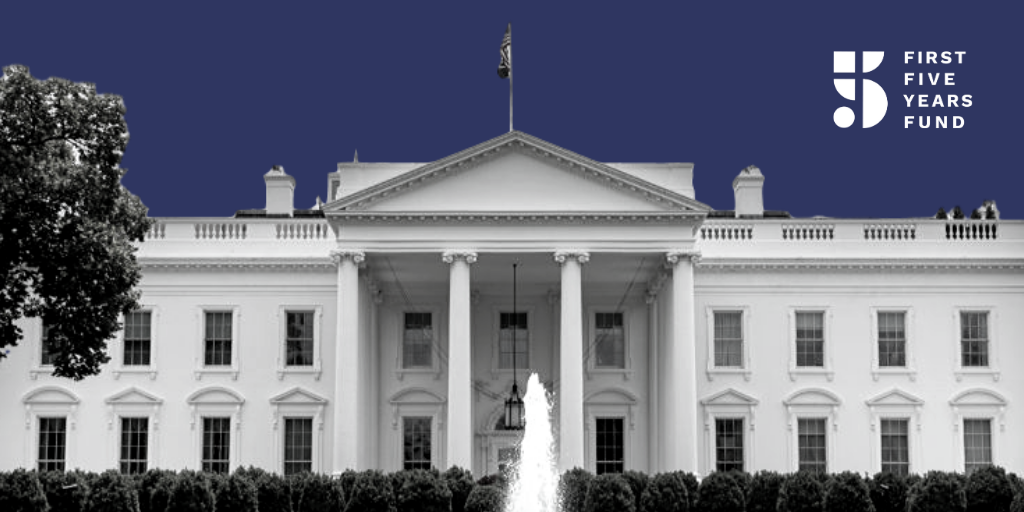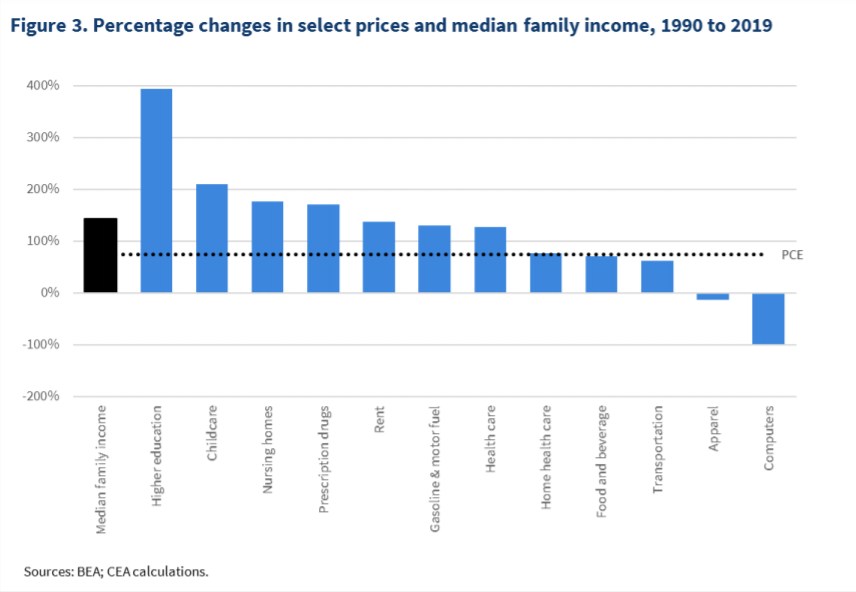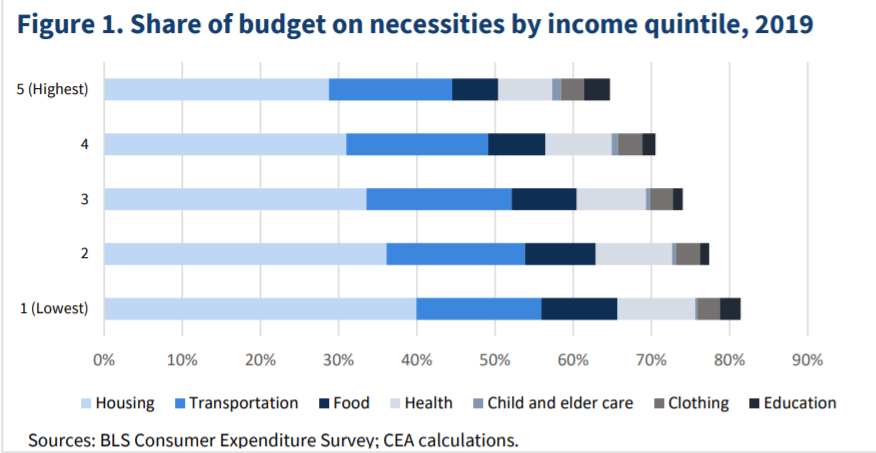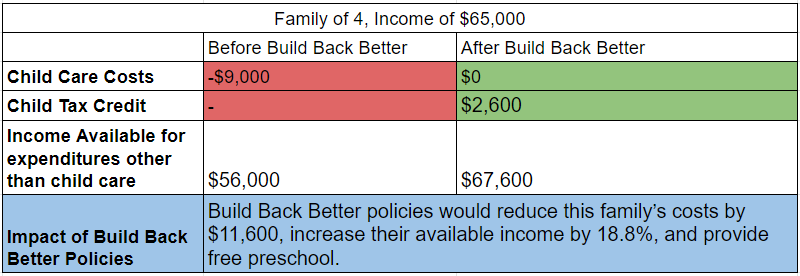White House Economic Brief Details Projected Cost Savings from Build Back Better Agenda, Including Child Care & Preschool Proposal

The White House Council of Economic Advisers and Office of Management and Budget released “The Cost of Living in America: Helping Families Move Ahead,” an issue brief that examines long-term trends in the costs that American families face. A key highlight showed how the cost of child care has increased 210% over the past three decades, well above family income growth. Key proposed policies in the Biden Administration’s Build Back Better Agenda will help to decrease such costs for families in the future.
As White House economists demonstrate, the price of many basic necessities – including food, clothing, housing, transportation, health, education, and child and elder care- has increased over the past few decades and outpaced both overall inflation and the typical household income. Child care costs, in particular, have skyrocketed and are unaffordable for many families. As demonstrated in the figure below, from 1990 to 2019, the overall price index grew 74%, the median family income grew 143%, yet the price of child care far outpaced both and rose by 210%. The high prices of child care make financial stability increasingly difficult to attain.

Not only have the prices of basic necessities increased, but they also compose a large share of the average family’s budget. Lower and middle-income families currently spend a higher share of their budget on basic necessities than higher-income families.
Families in the bottom twenty percent of the income distribution spend 80% of their budget on necessities compared to 65% of families in the top income quintile. Higher-income families have transitioned to more expensive and higher-quality versions of necessities, while low and middle-income families are more vulnerable to price increases and have less financial flexibility.
According to a 2019 report from Child Care Aware of America, on average, two-income families paid 11% of their income for child care, and in single-parent households, 36% of parent income goes to child care. Unaffordable child care costs have forced many families to make difficult choices of how to juggle paying the higher costs or having an earner exit the workforce altogether to provide care. The lack of available and affordable child care has a disproportionate impact on women, who often leave work and take on unpaid child care responsibilities. The decrease in women’s labor force participation limits impacts on lifetime earnings and a separate study found that rising child care costs resulted in a 13% decline in the employment of mothers with children under the age of five.
While the costs of basic necessities have increased over three decades, the median family income has not increased enough as many families frequently worry about paying their bills. Between 1990 and 2019, Census estimates indicate that household incomes adjusted for the cost of living for those in the 95th percentile grew about 25% faster than the incomes of those in the 20th and 50th percentiles. Given low and middle-income families’ incomes have risen more slowly, they are more vulnerable to the aforementioned price increases and would greatly benefit from policies aimed at reducing costs. While the median family income rose from $35,454 in 1990 to $86,011 in 2019, at the same time the cost of living rose by 74%. While overall the standard of living for a typical American family is higher than it was thirty years ago, the increase in prices across different goods and services vary and some expenditures, such as child care, have markedly increased and remained a significant challenge for many families.

When discussing how price changes affect families’ well-being, it is essential to understand the differences between the production of various goods and services. White House economists point towards technology as a sector where prices have fallen while quality has improved due to increased innovation and productivity.
However, childcare is a human service that cannot be automated in the same way that technology can (i.e. caregivers cannot watch children any faster in the same set of hours per day.) The price of child care has risen far faster than the price of other goods and services because child care cannot be automated and, as a result, it has increasingly taken a large piece of the average family’s budget over time.
The brief concludes by demonstrating how policies proposed in the Biden Administration’s Build Back Better Agenda will help lower costs for families. The expansion of the Child Tax Credit (CTC), universal preschool, improvements in the quality of child care, and reduction in associated out-of-pocket costs will all help families with mounting cost pressures. As an illustrative example of how the Build Back Better Agenda will directly help families, consider a family of four living in Indiana with two young children ages 4 and 6, whose parents together earn $65,000 annually. While they are at work, they send their young child to preschool, which costs $9,000 annually. For this family, policies implemented under the Build Back Better Agenda would reduce their costs by $11,600 by providing free universal preschool (saving the family $9,000) and expanding the child care tax credit (giving the family $2,600 in tax credits). These proposed policies would aid the family in making ends meet by increasing their available income to spend on items other than child care by 18.8%. The significant investments and reforms included in the Build Back Better agenda are critical to providing families with high-quality child care that is both affordable and accessible.

The child care system in America has reached a critical inflection point. Child care costs have continued to rise, productivity limitations will always remain due to its structure as a human service, and, without increased federal investments, it will likely become even more expensive because early educators are currently paid near poverty-level wages. COVID-19 further disrupted price, cost, and available supply and providers will likely have to pass on increased costs to parents in order to remain open. Taken together, federal investment and comprehensive reform are essential to ensure high-quality child care is affordable, accessible, and supports early educators through proper compensation. Key policies in the Build Back Better Agenda focus on addressing the increasing costs of basic necessities and seek to protect families from the risk of future cost increases.
To view the full brief, click here. To see more data on the costs of child care in your state see CostofChildCare.org.
Subscribe to FFYF First Look
Every morning, FFYF reports on the latest child care & early learning news from across the country. Subscribe and take 5 minutes to know what's happening in early childhood education.



